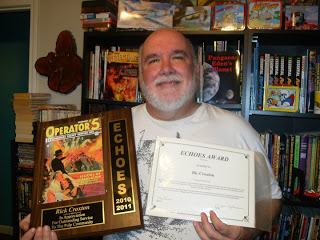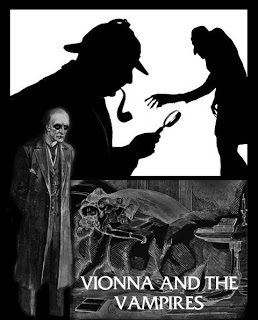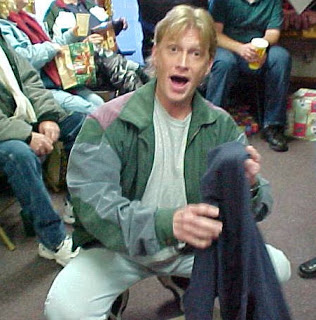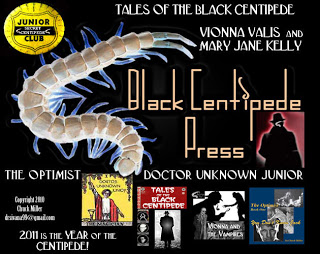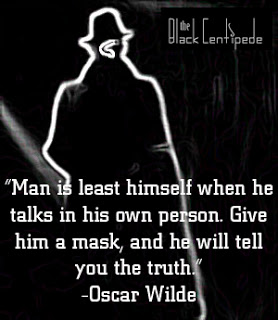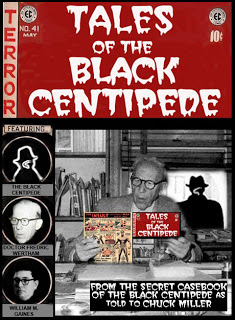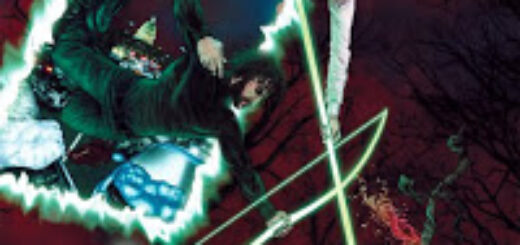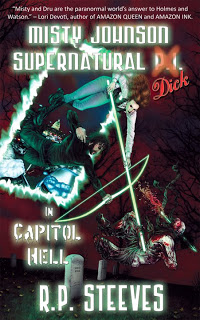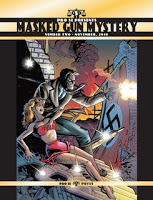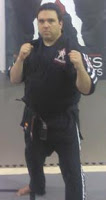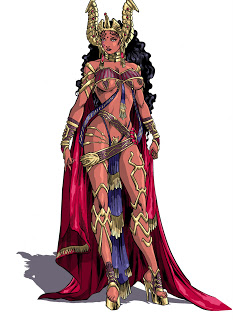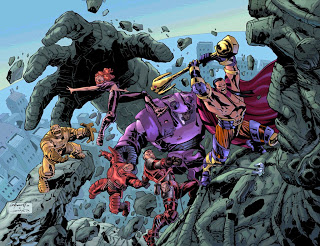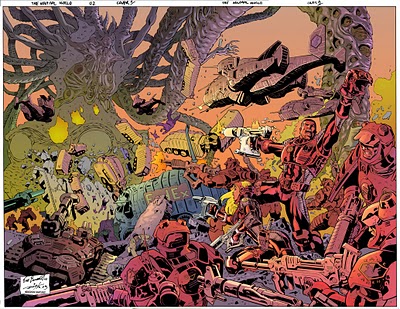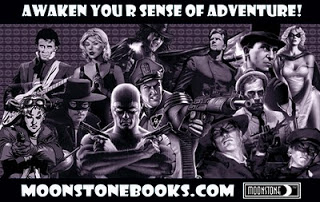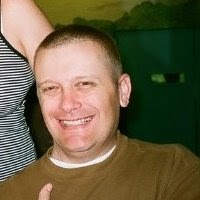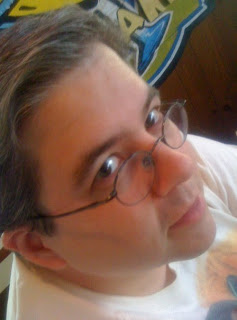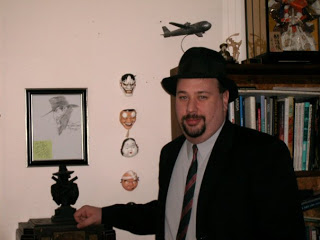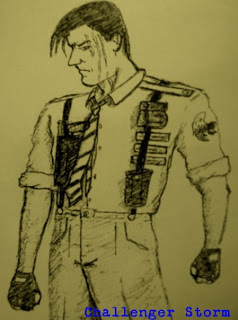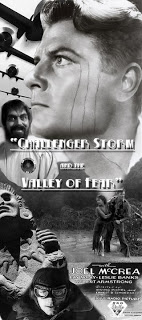ALL PULP INTERVIEWS RIC CROXTON, PULP PODCASTING PIONEER!
ALL PULP INTERVIEW-RIC CROXTON-PODCASTER
AP: Well, it’s about time! Ric, thanks a ton for stopping by and sharing your wit and wisdom with ALL PULP! Tell us a bit about yourself if you don’t mind.
RC: I’m just your average guy that was kidnapped by aliens to be taken back to their homeworld as a slave. On the way I was lucky enough to lead a revolt and take over the ship and become captain until it crashed on a distant planet. I quickly became Warlord and married the Princess (the most beautiful woman of two worlds)….. My wife just told me that I should just talk about my earth bound adventures.
I grew up mostly in southern Missouri in a small town of Preston, where if it wasn’t for the flashing red light you would never know it was there. My maternal grandparents would bring me a sack of old comics from an older cousin, which began a lifetime love of reading. At around the age of 12 while visiting my other cousins in north Missouri I became ill and my aunt let me read her oldest son’s Doc Savage books. Luckily this was the early 1970s and whenever I could I would buy both all the comics I could and whatever Doc Savage novels available.
At the start of my senior year in high school, my Dad decided we were going to move again (we did that a lot while I was growing up, but always moving back to Preston). We ended up in Springdale, Arkansas. While I was still in high school I opened up a used book shop in the local flea market. A few years later I bought a local used bookstore that soon became a comic book shop until I sold it in 1988 to a larger card and comic shop that started in the area. I became the manager for a time until he sold it to a chain of shops. I decided that I wanted a regular job where I wasn’t working up to 20 hours a day 7 days a week and could have a life outside of books. (What was I thinking? There is no life outside of books).
After that, I worked in the real world, met and married my wife of the last 16 years. Deborah, my wife had three brats…I mean adult kids and I soon became a grandfather to 4 monsters…I mean grandkids. We recently moved back to the Little Rock area so that we can be next to the monsters.
AP: You are most definitely a pulp fan from a long way back. What about the pulp tales intrigues you so much that you not only built a pod cast around them, but you have followed the various genres within the field for most of your life and are an avid collector?
RC: As I mentioned before I’ve been a comic book fan from the age of 7. I didn’t know at the time that I was reading Pulps with Doc Savage, Tarzan, Conan, Shadow and later, The Spider. Living in the area I was in was difficult at the time to find any Pulps. I was lucky to find the paperback reprints, even owning a bookstore. It was a little over 10 years ago when my wife and I were first living in Little Rock I bought my first Pulp at the local comic shop. It was a Fantastic Adventures issue with a Oscar the Martian Detective. “Oscar Saves The Union”. I still have it and my small collection of Pulps. My collection of Pulp reprints has taken over a bookcase and is growing. The thing I love most about Pulps is that not only does it cover my favorite, the hero Pulps, but it covers everything else like SF, mystery, crime, westerns and everything else. Plus I found out I have a connection the Pulps. My maternal grandfather (the same one that brought me comics) was a western Pulp writer of the late 1940s to 50s. He was L.C. Davis.
AP: Speaking of you collecting, describe if you would your collection of pulp and action/hero/etc. literature.
RC: As I mentioned above, I have a bookcase that is full of the hero Pulps and in another bookcase I am filling it with the comic book prose paperbacks. The house we live in I have a room of nothing but books, comics and magazines surrounding me. My wife has suggested I put another bookcase in the living room for some of my hardbacks so that I can display all my collection easier. My closet is full of drawer boxes of comics. I have 2 bookcases of nothing but comic book tpbs and hardbacks. Believe me I have more than enough paperbacks, comics, hardcovers and to read for a long time, but I am still adding more.
AP: You’re the founder, original host, and now co-host of THE BOOK CAVE. What possessed you to start a pod cast and what was the original intent of the show?
RC: About 4 years ago a very good friend of mine, Bruce Rosenberger was talking about podcasts on the Yahoo group we are on. He did around 12 episodes for the group before he went public and started KomicsKast. I was a guest on an early episode and became interested. Bruce mentioned other podcasts like Comic Geek Speak, SciFi Dig and others. Because I was working third shift 10 hours a night where I didn’t have to do much thinking I could listen to all the episodes I wanted.
What a lot people don’t know is that before the Book Cave I was part of another podcast called Legion of Substitute Podcasters, a Legion of Super-Heroes podcast. During that time was when I decided to start the Book Cave. Paul French, the leader of LSP was a great tech help to starting the podcast. Due to my working nights and only having the weekends off made it difficult for me to record with LSP. Like I said I worked nights and they worked days, it made it difficult for all of us to get together. They are a great bunch of guys with a fantastic podcast.
When I first thought about doing a podcast it was very different than what the first episode turned into. My first efforts I tried to script an dialog about Pulps and comics. When I recorded it and played it back, I hated it. I asked myself what I liked about podcasts and what I didn’t. I liked how Comic Geek Speak talked to the creators and got some great info. I learned that I’m not a big fan of the stick to the script podcasts. Some of their shows it felt like they were all reading the scripts and would laugh because the script says insert laugh here. My biggest influence is from Bruce’s KomicsKast, where he would talk about small press comics, comic strips and all the things he enjoyed. I thought why don’t I do a podcast talking about what I like and thus began The Book Cave.
AP: THE BOOK CAVE has grown into a fantastic venue for Pulp fiction, its writers, artists, and creators to really get out and talk about their work. Why do you think it has had the impact it has?
RC: The reason The Book Cave has had the impact is because Art and I are fans. As Art would say :This is a show by fans for fans”.
AP: There’s a ton of discussion within the pulp field these days on various topics. One of these is do we write public domain pulp characters as they were originally conceived or do we update, add to, take away from, or wholesale change them for a modern audience? Where do you fall on this?
RC: I think that if you want to write about Ki-Gor, keep true to what he is. I have no problem with a writer adding something to flesh him out. If they decide that Ki-Gor loses an arm or leg and they make him a cyborg with a laser eye and has a jetpack, this is no longer Ki-Gor. Change his name and make it your character. I’ve read other books where the writer has taken someone like the Shadow and changed him into what he wants and given him another name, but you know he is a different version of the Shadow. Remember if you are going to write the Shadow, he doesn’t wear purple tights, mask and green cape and he isn’t a head on a robot body.
AP: There’s also a lot of talk about how relevant pulp is today. Is relevance really important or is it more about telling a good tale? If the story is solid, will fans find it or does it need to impact modern society in some way?
RC: I read to escape reality, to imagine myself doing things I either never would do or never be able to do. If the story has relevance in the world, great, but the most important thing a story must do is entertain.
AP: You’ve interviewed everyone from brand new writers to legends like Tom Johnson. Anyone you haven’t had in THE BOOK CAVE yet that is sort of a dream guest for you?
RC: I’d love to have a group of Pulp greats like Tom Johnson, Will Murray and a couple of others to talk about the Pulps. Art and I could introduce them, then step back and let them have the mic for as long as they want.
AP: You’ve also added a pod cast or two to your lineup. Tell us about those, if you would.
RC: I started three other podcasts of which one Popcorn Theatre is in limbo. Ric’s Comics is my comic book podcast where I can talk about comics. I know there are a ton of comic book podcasts, but most of the hosts are much younger than me. I wanted a podcast that appealed to the older fan.
Future 4 Color started in my Ric’s Comics, but grew too big for it. F4C is podcast about Previews. While almost every comic book podcast has a Previews episode. F4C is Previews and my co-host, Bruce Rosenberger and I give some history on some of the books. Each week is a different section of Preview, DC, Marvel, major Independents and other Independents in the back of the book. The show was inspired by Bruce’s BOP (Bottom of the Pile) episodes on his podcasts. On F4C, Bruce and I and guests would chat about a book and maybe give a history or ask each other if we know anything about the creators. Sometimes we would gripe about prices.
AP: You have a co-host on the book cave. Tell ALL PULP what it’s like sharing a desk, so to speak, with Art Sippo.
 |
| Art Sippo, Co-Host of THE BOOK CAVE |
RC: It has been a great honor and pleasure having “The Mad Doctor” as co-host. If you think Art and I geek out during the show, you should hear us when we aren’t recording.
Art and I met in person at the 2006 La Plata, MO Doc Savage Convention. We met again in the 2007 and 2008 Cons. At the 2008 I told Art I was thinking about starting a podcast and asked if he would be interested in coming on for an episode. Art was on episode 4 to talk Sun Koh and several other episodes before becoming my co-host in 2009. My running joke on the show is where everyone else Googles, I Sippo. Art is a walking encyclopedia on Pulp. He’s a lot of fun having him on the show, plus I get to do Mad Doctor jokes when he is unable to be there.
AP: So, can you pull back the veil and share anything about future guests on THE BOOK CAVE with our readers?
RC: Coming in February is the return of Bill Preston. If you remember Art and I went nuts trying to find a copy of his story in Asimov. Bill was gracious and sent us a copy of “Helping Them To Take the Old Man Down”. This February in Asimov he has a new “Old Man” story, “Clockworks”.
AP: Ric, we really appreciate you taking the time to visit! You are now leaving ALL PULP…

